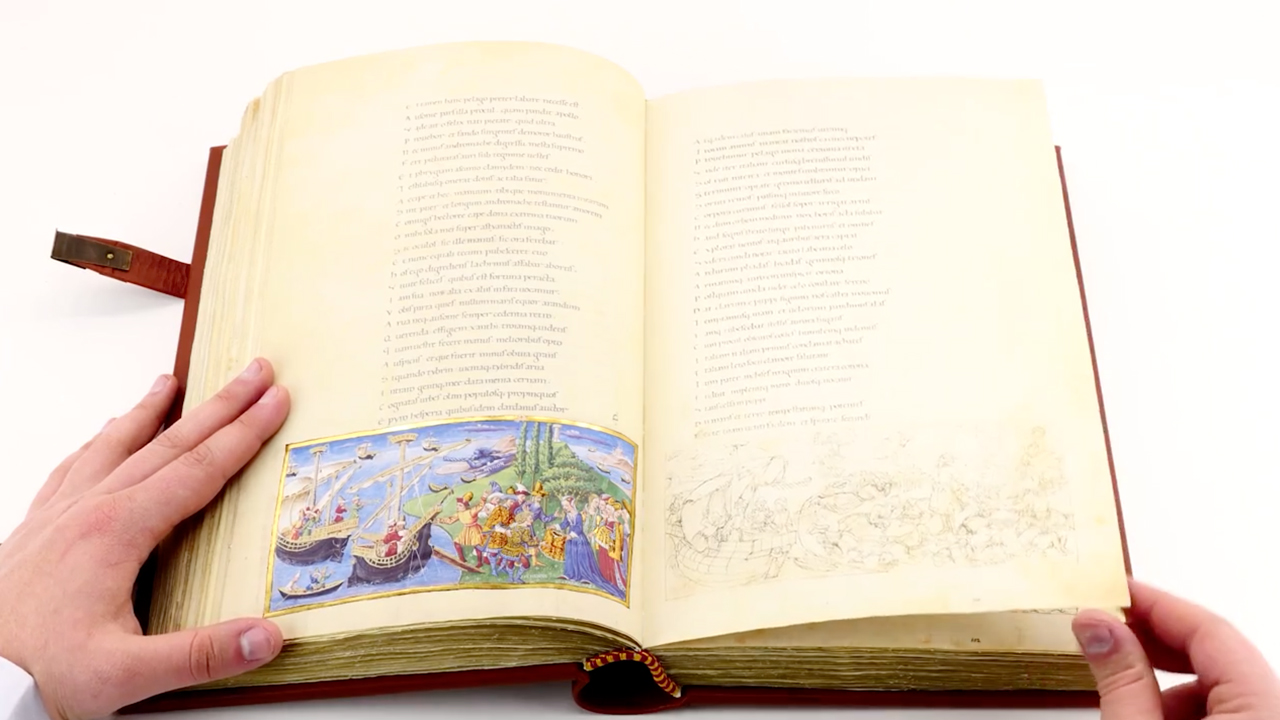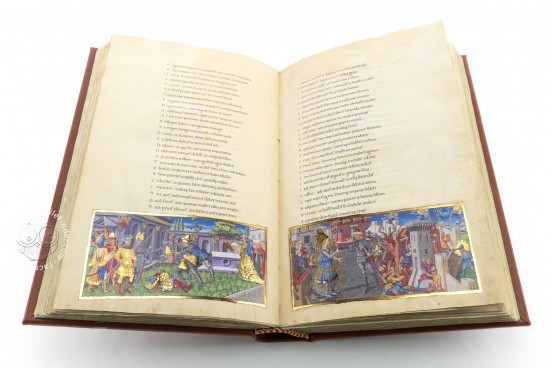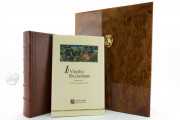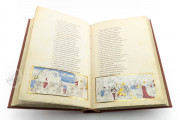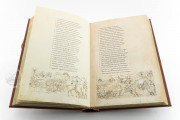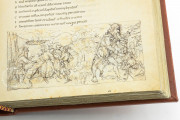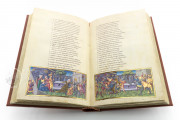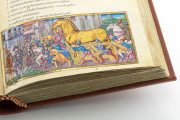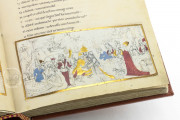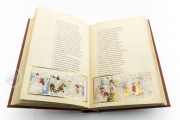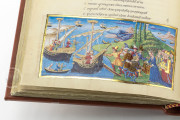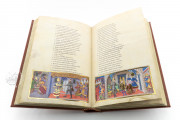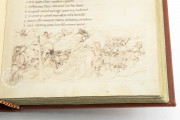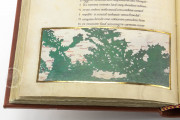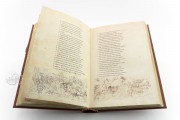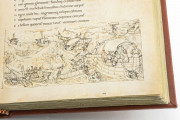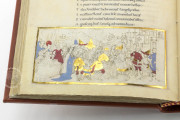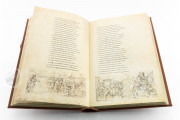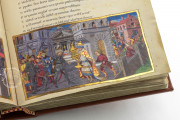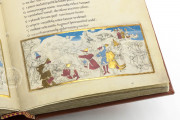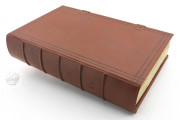The Riccardiana Virgil is a sumptuously illuminated manuscript of the major works of the ancient Roman poet Virgil, which was written and illuminated in Florence in the middle of the fifteenth century. The scribe, Niccolò d'Antonio de' Ricci, signed his work. The miniatures, of which there are eighty-seven, were painted by Apollonio di Giovanni and assistants. Many of the settings evoke contemporary Florence. Nineteen were left incomplete, providing glimpses of Apollonio's detailed underdrawings and workshop practices.
The Riccardiana Virgil presents the Eclogues, the Georgics, and the Aeneid in the order they were composed, each longer than the previous. The bulk of the miniatures illustrate the epic Aeneid.
An Ambitious Project
The illumination of the Aeneid begins on its second page and proceeds with a bas-de-page ("bottom of the page") miniature on every following page of books 1-3 (fols. 61v-104v). The plan was ambitious regarding both the pervasive presence of images and the level of accomplishment in their execution.
The miniatures are of the highest quality and intricately painted, with lavish attention paid to the unfolding drama—both among humans and between humans and gods—and the rendering of details, such as ships, weapons, and brocaded garments. The protagonists are frequently labeled to ensure clarity of presentation.
Portraits of Standing Monuments
The miniatures are famous for frequently portraying historical and contemporary monuments and buildings. Often idealized or schematic, they evoke the world known to fifteenth-century Florentines.
The recently constructed Palazzo Medici (today Palazzo Medici Riccardi) in Florence, with its distinctive rough-hewn stonework, is suggested in several miniatures (fols. 67v, 72r, 74v, 77v, 79r, and 82v). An idealized image of the city's baptistry also appears (fols. 66r and 67r). The Roman Imperial Pantheon and Column of Trajan are also pictured (fols. 82r and 82v), as is the church of Hagia Sophia in Constantinople (fols. 76r and 76v).
These "portraits" of buildings and monuments do not establish locations for the pictured events: a battle occurring in the city of Troy includes monuments resembling the Column of Trajan and the Palazzo Medici (fol. 82v). And an octagonal building resembling the baptistry of Florence cathedral appears in the miniature of the birth of Romulus and Remus near Rome (fol. 66r).
The Night Sky
An unusual feature of the miniatures is the careful rendition of constellations. In one miniature, both Scorpio and Orion (with Lepus, the hare) appear in the sky—a juxtaposition never seen in nature—reflecting ancient myth (fol. 81r). In another miniature, Orion (and Lepus) are pictured near Taurus as occurs in nature (fol. 101r).
An Unfinished Project
Only the underdrawings were done for the last eight miniatures (fols. 101-104). In them, we can see the great delicacy of Apollonio's drawing and his tight control over his assistants. The drawings include every detail, and the colorists enjoyed little creative freedom. It is possible that the project of illuminating the manuscript was cut short by Apollonio's death in 1465.
Humanistic Initials
Niccolò wrote the Latin hexameter text in Humanistic Minuscule in long lines (a single column), with the first letter of each verse set off in the left margin. The decorated initials, which were all painted as planned, are of a type known as "white vine-stem." Unpainted parchment forms the vines, which appear against grounds of pink and green, outlined in brilliant blue.
The manuscript appears in the 1756 inventory of the library of the Riccardi family (foundation collection of Biblioteca Riccardiana). The current blind-tooled leather binding over pasteboard dates from the nineteenth century.
We have 1 facsimile edition of the manuscript "Riccardiana Virgil": Virgilio Riccardiano facsimile edition, published by ArtCodex, 2002
Request Info / Price
